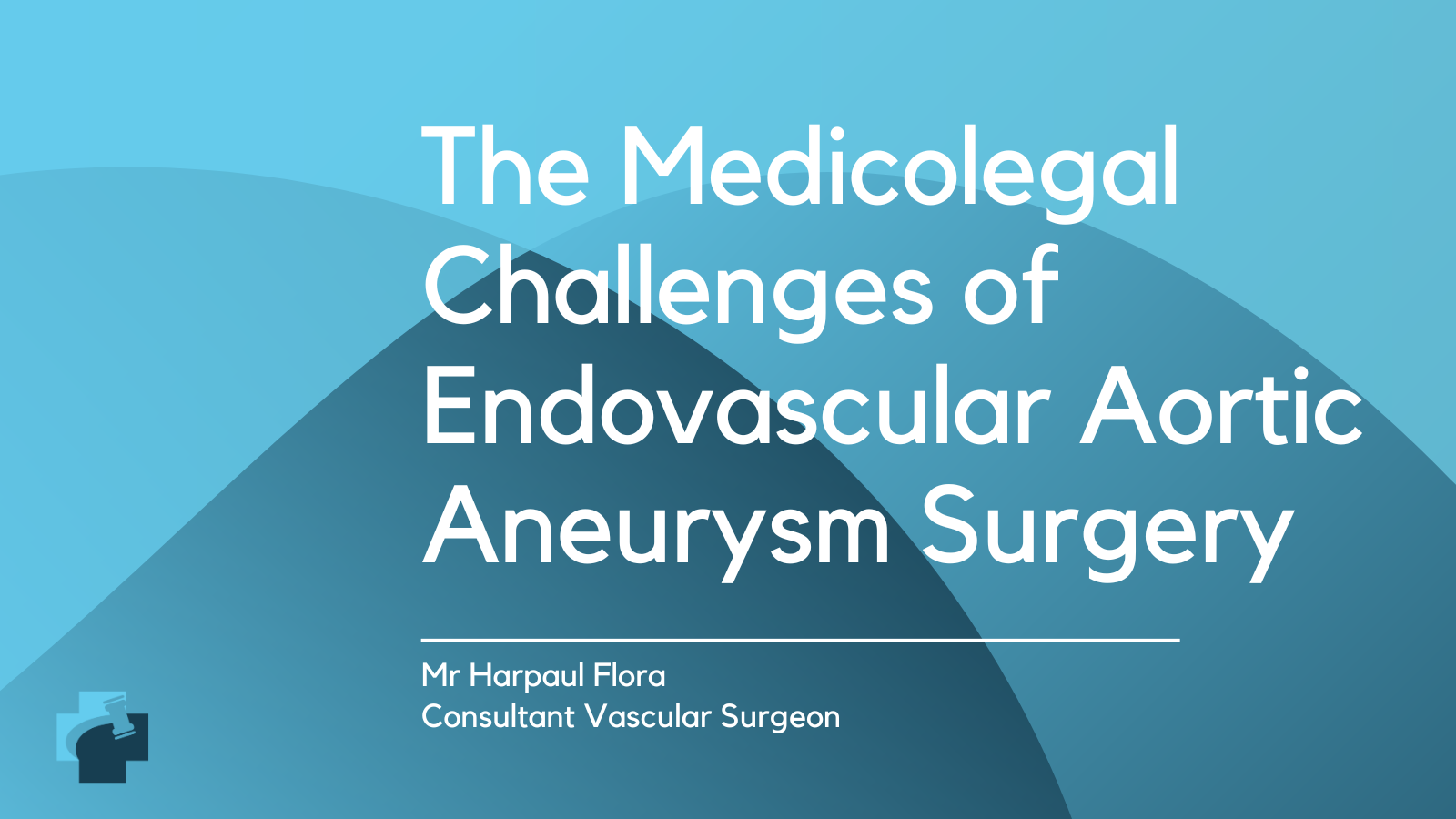The Medicolegal Challenges of Endovascular Aortic Aneurysm Surgery

Aortic aneurysms, which are balloon-like bulges in the blood vessels, can occur at any point along the length of the aorta. As blood pumps through the aneurysm, the pressure can cause the layers of the artery wall to split and the aneurysm ruptures. This leads to massive internal bleeding, which normally proves fatal. Before the 1990s, open surgical repair was the only treatment option. However, in 1991, the new technique of endovascular aortic aneurysm repair (EVAR) was pioneered. Although this has revolutionised the treatment of aortic aneurysms, it has also introduced some challenges.
EVAR entails the placement of a fabric-covered stent graft into the damaged portion of the aorta to bypass the aneurysm and exclude it from systemic arterial blood pressure. Thus, the overall aim of EVAR is to completely exclude the aneurysm from the circulatory system. Usually, aortic stent grafts comprise a bifurcated body and one or two iliac limbs which maintain blood flow to the legs. However, more complex aneurysm cases can be treated with fenestrated or branched grafts which are extra components that can be added to maintain blood supply to major organs.
When compared to open repair, patients undergoing EVAR have lower perioperative rates of both morbidity and mortality. As a less invasive approach, it has also enabled the treatment of patients who would previously have been considered ineligible due to excessive perioperative risk factors. Because of this, mortality associated with aneurysm rupture has decreased. However, the benefit of EVAR in terms of survival reduces over time and may even exceed that of open repair after about 8 years of follow-up. This is partly due to higher rates of late complications associated with EVAR, which result in higher late mortality. Therefore, in younger patients with a longer life expectancy and lower perioperative risk, open repair may be more suitable. Additionally, patients with anatomic constraints should not be treated with EVAR.
The most common complications of EVAR are endoleaks, when blood continues to flow into the aneurysm sac, which are classified according to the origin of the blood flow. Type I leaks occur when blood flows between the stent graft and the native arterial wall. Although most commonly seen at the time of stent placement, late Type I leaks can develop due to progressive aneurysmal disease involving the infrarenal neck. Type II leaks, which are the commonest type, involve a retrograde flow of blood through vessels which communicate with the sac. Unless the sac is enlarging, intervention is not usually required, and up to one-third of this type of leak may spontaneously resolve. Type III leaks occur when there is a structural failure of the stent graft due to separation of the component parts or tearing of the fabric. Type IV leaks, which are rare, indicate graft wall porosity and are usually identified during surgery. In a Type V leak, the aneurysmal sac continues to expand despite no obvious evidence of a leak.
Endoleaks can occur at any time after graft placement, with cases being reported up to 7 years after the original surgery. Therefore, careful surveillance of the patient is recommended, ideally for life. An initial assessment should take place 1 month after surgery, with annual check-ups thereafter, although this interval should be reduced to 6 months in patients with known endoleaks. Computed tomography (CT) is the best method, as the images produced allow assessment of aneurysm size, the placement of the graft and the presence of any leaks. However, there is some concern about the cumulative radiation dose arising from repeated follow-up scans. Therefore, alternative methods, such as ultrasound, magnetic resonance imaging and plain radiographs, should be considered. As all of these methods have advantages and drawbacks, it is important to choose the method most suitable for the individual patient.
As well as the general risks associated with any surgical procedure, other complications unique to EVAR include kinking or compression of the stent graft. This can result in claudication, a pain in the muscles when exercising due to lack of oxygen, in the lower limbs, particularly if one of the limbs of the graft becomes completely blocked. Twisting of the graft can occur at insertion due to difficult anatomy, or may develop over time due to changes in the blood vessels as the aneurysm shrinks. Ultimately, the components may become disconnected, resulting in a Type III leak. Changes in the aneurysmal sac or initial selection of a graft of the incorrect size can also lead to device migration over a period of time. Furthermore, as EVAR is a relatively new technique, the long-term durability of the graft materials is unclear and leaks may occur as the graft degrades. Although rare, spinal cord ischemia can be particularly serious, as it leads to paraplegia in more complex cases. Preventative measures include prophylactic cerebrospinal fluid drainage, avoidance of hypotension, mild perioperative hypothermia and neuromonitoring.
While EVAR undoubtedly has short-term benefits compared to open repair surgery, and it has allowed the treatment of aneurysms in patients previously considered ineligible, the long-term outcomes of this procedure remain unclear. Therefore, the decision to treat an aneurysm with EVAR must weigh up the risks of treatment against the risk of rupture, their general health, while also considering the patient’s life expectancy and preference.
Further reading:
Swerdlow, N. J., Wu, W. W., & Schermerhorn, M. L. (2019). Open and Endovascular Management of Aortic Aneurysms. Circulation Research, 124(4), 647–661. https://doi.org/10.1161/CIRCRESAHA.118.313186
Thakor, A. S., Tanner, J., Ong, S. J., Hughes-Roberts, Y., Ilyas, S., Cousins, C., See, T. C., Klass, D., & Winterbottom, A. P. (2015). Radiological Evaluation of Abdominal Endovascular Aortic Aneurysm Repair. Canadian Association of Radiologists Journal, 66(3), 277–290. https://doi.org/10.1016/j.carj.2014.12.003


